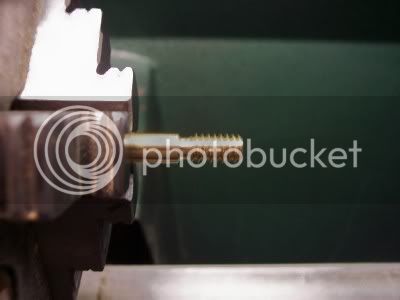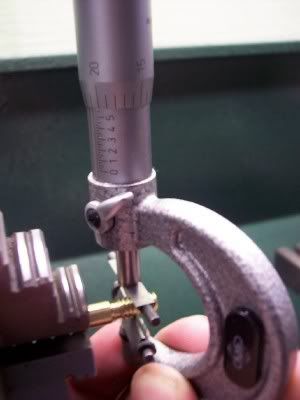rake60
Well-Known Member
- Joined
- Jul 8, 2007
- Messages
- 4,756
- Reaction score
- 124
I'm making some brass studs for a project and decided to try and show
my approach to single point threading. It is a 1/4"-20 thread in brass so
I cut straight in as I usually do. The original full video was 5 minutes.
I did abbreviate some but nothing was added or removed in editing.
Being an even number pitch I could use any number on the thread dial.
To keep it simple for myself, I used #1. The thread depth was never checked
prior to finish. I go half the Double Depth plus .003" and it usually fits.
It may be an oversimplified, dirty approach to threading.
Most times that's all it takes to get an accurate thread.
This is what I ended with.

And, how I got to that point.
[ame]http://www.youtube.com/watch?v=UjUfWq9j6fA[/ame]
If you still haven't tried single point threading give it a go!
It ain't rocket science...
Rick
my approach to single point threading. It is a 1/4"-20 thread in brass so
I cut straight in as I usually do. The original full video was 5 minutes.
I did abbreviate some but nothing was added or removed in editing.
Being an even number pitch I could use any number on the thread dial.
To keep it simple for myself, I used #1. The thread depth was never checked
prior to finish. I go half the Double Depth plus .003" and it usually fits.
It may be an oversimplified, dirty approach to threading.
Most times that's all it takes to get an accurate thread.
This is what I ended with.

And, how I got to that point.
[ame]http://www.youtube.com/watch?v=UjUfWq9j6fA[/ame]
If you still haven't tried single point threading give it a go!
It ain't rocket science...
Rick





